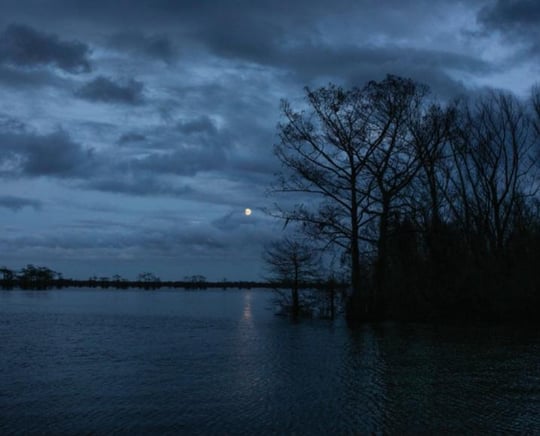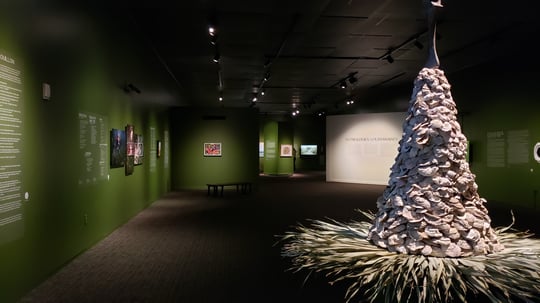
The power of the song “Summertime,” delivered as a lullaby at the opening of the 1934 opera Porgy and Bess, is its irony. The livin’ couldn’t have been easy for people of color in Charleston in 1934, and this summer has certainly not been easy, with Philando Castile’s death in Minnesota, the deaths of Alton Sterling and three police officers in Baton Rouge, and the killings of police officers by a sniper at a Black Lives Matter rally in Dallas. Porgy and Bess, written by DuBose Heyward and Ira Gershwin, is noted as the first opera to elevate black lives to the subject of high art. With its story adapted from Charleston-born author Heyward’s 1925 novel Porgy, which reimagined the life of a disabled beggar whom he read about in the local newspaper, productions of Porgy and Bess tend to reflect the opera’s origins in white assumptions about black lives. Though it is admired for conveying the emotional lives of its characters, the opera is mired in stereotypes revolving around drinking, gambling, drugs, sexism, and violence. This year the opera received a brand new staging for the 2016 Spoleto Festival USA in Charleston, South Carolina. Directed by David Herskovits and designed by artist Jonathan Green, this new production confronts those problems and offers a new vision of Porgy and Bess.
Given that Porgy and Bess is set in Charleston, it would seem an obvious pick for the Spoleto Festival. As the New York Times reviewer noted, Porgy and Bess is Spoleto’s “birthright,” yet it had not been staged in Charleston since 1985. On the occasion of a complete overhaul of the city’s Gaillard Auditorium and the festival’s fortieth anniversary, Spoleto finally tackled the opera. The show sold out in three weeks, and the festival arranged free public screenings to meet the demand.

The timing of Spoleto’s production turned out to have political relevance as well, with the subject of black lives emerging as a theme of this year’s festival, not only in Porgy and Bess but also in Carrie Mae Weems’s new performance Grace Notes. Both feature lullabies: Courtney Johnson’s performance of “Summertime” in Porgy and Bess is divine, while Weems’s performance climaxes with the bluegrass classic “Go to Sleep Little Baby.” Each of these contrasts the peace and calm of the lullaby with moments of police violence. Grace Notes features the now omnipresent footage of contemporary police brutality. In Porgy and Bess, white policemen violently attack residents as they search the fictional black neighborhood Catfish Row, a plot point that provokes raw emotion given the public’s increased awareness of police brutality since Michael Brown’s death in Ferguson.
Where Weems’s performance searches for grace in the face of brutality, it is Gershwin’s music that offers the audience a sense of grace in Porgy and Bess. His score synthesizes jazz, classical music, and the spirituals he experienced during a stay in the Lowcountry, and the results are beloved. The music expresses the struggle of a community living in oppressive circumstances, but previous stagings of the opera have not succeeded in visualizing the transcendence that the music gives us. Instead, the set and ragged costumes have been drab, chosen to emphasize the rundown quality of the buildings and the main characters’ lack of money. Jonathan Green’s staging is remarkable in turning that tradition on its head.

Green envisions a much more resplendent Bess than we have been given before, and his vision was translated to the stage by costume designer Annie Simon. Wearing a stunning red gown with a giant red bow on her head, Bess makes her grand entrance at the beginning of the opera as if she has just walked out of one of Green’s paintings. Green’s signature style involves big hats, bright colors, and strong women. His female figures are depicted with a flatness that recalls Jacob Lawrence’s Great Migration series (1940-41), minus the dark content of Lawrence’s historical basis in Jim Crow–era segregation and racism. Green is known for paintings that celebrate the spirit of the Gullah culture of the Sea Islands of South Carolina and Georgia, inhabited by descendants of slaves and geographically isolated enough to allow for preservation of the Gullah language, a combination of English and African languages. The African-American artist grew up in the Gullah community of Gardens Corner, South Carolina, a tiny spot that I know best as the halfway point on family trips from Charleston to Hilton Head Island. It is this Gullah spirit that Green uses to dismantle Heyward’s white fantasy of Porgy’s world.

Green’s sketches for the opera are on view at the Gibbes Museum of Art in Charleston in the exhibition “Beyond Catfish Row: The Art of Porgy and Bess.” Catfish Row is the name of the tenement building where most of the characters in Porgy and Bess live. A 1928 etching by Alfred Hutty depicts the inspiration for Catfish Row, Charleston’s Cabbage Row. The exhibition explores how Porgy’s world has been depicted in the visual arts, such as Henry Botkin’s c. 1935 painting with heavy impasto in dark colors that depicts Porgy kneeling to indicate his crippled legs. Botkin was Gershwin’s cousin, and the gallery features the composer’s paintings as well: a 1935 portrait of DuBose Heyward and a self-portrait. Two published librettos are featured in vitrines, including lithographs from Kara Walker’s 2013 edition. The 1935 publication used drawings by George Biddle, whose ink-and-watercolor drawings of people are delightful and sly in their assessment of human character. Like the Gaillard Auditorium, the Gibbes Museum is also celebrating a complete overhaul that has involved reinstalling its permanent collection and allowing free public access to the ground floor, which features artist studios, classrooms, a gift shop, and in the future, a café.

Green has explained his approach to Porgy and Bess as imagining a version of history that did not involve enslavement, in which African-Americans willingly chose to immigrate to a new country rather than being transported by force. It sounds fantastical, but it’s not meant to be a counterfactual brainteaser. Green’s design represents a thought experiment in the tradition of the avant-garde, with its commitment to utopian visions as an implicit critique of present-day society. Green expresses the character of Catfish Row’s residents through bright colors and patterns and to emphasize West African visual motifs.

The main conceit of the staging, executed by set designer Carolyn Mraz, is to add panels displaying West African visual elements to the set’s houses after the characters’ excursion to Kittiwah for a picnic (clearly a reference to Kiawah Island, one of the barrier islands surrounding Charleston). The Kittiwah scene is also the one that most resembles a Green painting: bright blue sky, a crowd of beautiful white dresses and wide-brimmed hats, and palmetto trees. Green has had the tree trunks wrapped in red and white diamond and stripe designs, and when the crowd returns to Catfish Row, one of the trees takes up residence in the middle of an old fountain, used as a focal point in much of the staging. The characters then bring out panels and add them to the houses’ facades, layering the West African designs over the classical references of the original architecture. By the end of the opera, the panels imply that the community has fully embraced its African heritage in a way that is empowering, just as Porgy will take charge by setting off for New York to find his love Bess.

This same design element has been applied to the city of Charleston as well, with the diamond motif showing up on the Porgy Houses, nine sites associated with the opera or African-American history. The vinyl decals serve as historical markers—omnipresent in the historic district—that tend to focus on white history, not black, and often attest to gentrification. The original model for Catfish Row, Cabbage Row, is now in the heart of “South of Broad,” the most expensive area of downtown.
The sites north of Calhoun Street afford an unintentional tour of more recent gentrification. A wedding invitation store now inhabits the former Peoples Federation Bank, the first African-American bank in Charleston. A wedding dress shop shares Spring Street with the Decosta House, former home of a noted African-American architect, and the Florence Alberta Clyde House, former home of the noted black educator. There’s a yoga studio near the last residence of Thomas Mayhem Pinckney, an African-American craftsman known for his work preserving historic buildings in Charleston.

Most interesting are the Jackson Street Cottages and the Philip Simmons Museum and House, located in a not-yet gentrified neighborhood northeast of the historic district. Simmons was a master blacksmith whose work has become highly valued. The opera’s set features a nod to the artist in its scrim, a giant wrought iron gate that features an abstracted palmetto tree design. The Jackson Street Cottages are a grouping of four dilapidated cottages, significant as among the few remaining examples of “freedman’s cottages,” small houses thought to have been built by and for freed slaves (but which actually served a much wider community.) On these ruins, the diamond symbols act as an expression of pride, referring to a secret code that slaves may have while escaping to freedom on the Underground Railroad.
The Porgy Houses build on the tradition of site-specific artworks that make the invisible history of a site visible and present. They’re an inherent challenge to the tourist economy of Charleston, which has been established from the point of view of white plantation owners. Visitors to Charleston’s plantation sites have already seen movement in this new direction, such as in the interpretive tours given from a black perspective at the McLeod Plantation. In this production of Porgy and Bess, Green asks what would it look like to upend the story of that opera as well. By taking Green’s vision out of the opera house and into the streets, the Porgy Houses grace downtown by honoring black lives past and present, both imagined and very real.
“Porgy and Bess” was performed at the Charleston Gaillard Center on May 27 and 30, and on June 1, 3, 8, and 12.
“Beyond Catfish Row: The Art of Porgy and Bess” is on view at the Gibbes Museum of Art in Charleston through October 9.
Rebecca Lee Reynolds is an assistant professor in the department of fine arts at the University of New Orleans, where she teaches art history.





